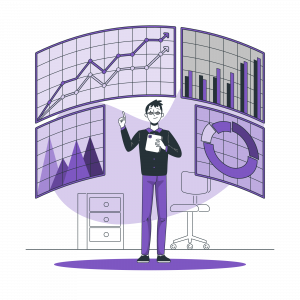How likely is a customer to buy your product? How likely is your customer to click on your ad? What if your emails don’t get read by customers?
As marketing professionals, much of our time is spent contemplating customer actions. We want them to visit our website, open our emails, click our ads, sign up for newsletters, watch our videos, buy our products, and, more importantly, keep buying.
These desired actions are more often than not just desired but seldom predicted. What if we told you there is a way to logically predict the future?
What is predictive modeling?
Predictive Modeling is making predictions based on past data.
And it lets you do just that using:
Historical & existing data
Mathematical models
Statistical techniques
Neural networks
Machine learning & reinforcement learning
But do not let the name fool you. Predictive modeling works like a crystal ball, except it’s far less ambiguous and more factually driven.
Why is predictive modeling important?
Predictive modeling relies not on empirical data or intuition but on tried and tested methods grounded in concrete research.
Coupled with advanced tech like Machine Learning (ML) and neural networks, the ability to forecast outcomes becomes increasingly accurate.
Here are some of the common advantages attributed to predictive modeling.
Saves time & cost
Forecasting possibilities without robust logic to back your predictions is as expensive as time-consuming. Not to mention the margin of error always lurking about when you shoot in the dark.
Aids you in understanding the consumer
Understanding your end user’s needs is non-negotiable. Past behavioral patterns and purchasing habits are baked into the predictive modeling systems to gauge how your customer might react tomorrow by studying how they have been behaving.
Identifies trends
The said models also distill trends from the past and present to identify future trends and pinpoint patterns that will shape market dynamics and consumer behavior.
Minimizes risks
You are more likely to hit the target in the light than in the dark (provided you know who/what the target is). If one had to highlight one of the core uses of predictive modeling, it would be its innate ability to minimize and mitigate risks. It enables you to reduce the number of unknown erratic variables by accounting for all factors, internal or external, before you make pivotal business decisions.
Maximizes revenue
The same models that save time and money also tell you how to augment your business with a wider range of offerings and, more importantly, when and where to start. All this results in increased revenue down the line and is an airtight long-term play.
How good or bad is predictive modeling?
This statistical technique is an iterative process because no model is ever complete. There are umpteen variables to be added and improved to sharpen the accuracy of a model’s predictions. This is where several components that constitute a predictive model spring into the picture.
Components of a predictive model:
Historical & existing data
Mathematical models
Statistical techniques
Neural networks
Machine learning & reinforcement learning
Market conditions
A successful model is where these components work together in the ideal configuration to provide fail-proof predictions.
But the model in itself is far from being fail-proof, for it does suffer from a set of limitations.
Limitations of predictive modeling:
Lack of proper datasets
If you don’t plug in the correct data, your entire model won’t work as you intend it to. Collection and sorting of data are paramount and time-consuming. Then there is the risk of overtraining data that might skew your predictions which could be equally dangerous.
Technical challenges
Even though the model only shows a probabilistic estimate, doing so requires incredible mathematical and technical expertise. Data scientists and mathematicians spend a lot of time building a suitable model for the use case.
Mismatch of business use cases
Speaking of use cases, you are unlikely to see any success if you don’t plug the right model into the right business case. Even a slight change in a use case would demand several variations in the corresponding model.
Presence of bias
Despite machine learning functionalities, human bias eventually creeps into every nook and cranny if left unchecked. Since human intervention is unavoidable, contingency mechanisms must be in place to scan the systems for visible bias.
Having said that, numerous successful predictive models are in use out there, namely classification model, gradient boosted model, clustering model, forecast model, outliers model, time series model, decision tree model, neural network, and general linear model, among others.
Conclusion
While predicting the future is never going to be 100% accurate, and there is always going to be a margin of error, as marketers, constructing game-changing algorithms for business-critical scenarios is the need of the hour to craft immersive strategies and customer segments so businesses can take millions of dollars from the expenses section of their balance sheets and put them in the income section.





































